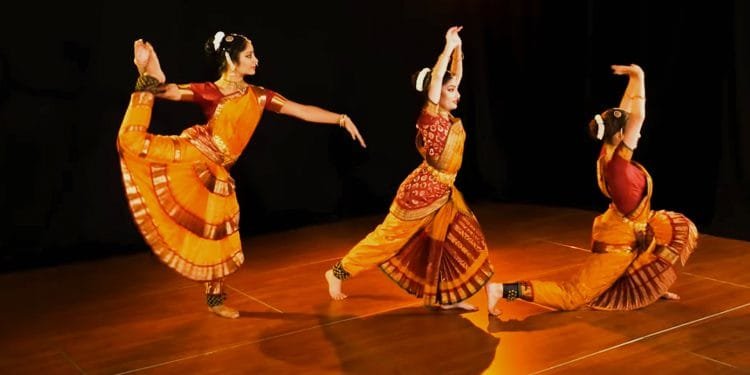How often have you grooved to some random beats at a public place, say for instance at a shopping mall, and instantly felt all the pressure from your work taken off and slowly ebbing away? Well, if your answer is “all the time,” then you already have that magic trick up your sleeve to fight stress clawing its way into your life. Frankly, this is not just your story but ours all. It has been scientifically ascertained that dancing leads to a healthy release of endorphins, which are immediate triggers of joy and relaxation, thereby helping attain a fun-inducing mood. Automatically, doing such a thing that gives you no anxiety but a sense of euphoria of being free is the best stressbuster ever. What more could one ask for, right? You don’t even have to go to your yoga classes or join the fitness clubs by burning a hole in your pocket to get rid of your stress, because all you need is your favourite music and your nimble feet will start waltzing in no time.
Although dance in general is an art that is incredibly relaxing for everyone, the classical dance of India with states has a distinct therapeutic value. In the field of Ayurveda, dance has been considered to have a very strong healing power that rejuvenates people from the inside. This fact has also been validated by ‘Natya Shastra’ which has confirmed the existence of a very intrinsic and deep connection between psychology and the overall rendition of a dance performance accompanied by music. Especially, when the gestures and actions along with the words come together in a dance form, it embodies different expressions with vivacious movements of eyebrows, head, neck, limbs, and so on, which are equivalent to fitness exercises.
Classical dances of India can be classified into seven different categories, such as ‘Bharatnatyam,’ ‘Kathakali,’ ‘Manipuri,’ ‘Kathak,’ ‘Kuchipudi,’ ‘Odissi,’ and ‘Mohiniattam.’
The Bharatnatyam dance form involves spectacular mudras or hand-finger movements, facial expressions, and body contortions. To depict all of that together, brilliant hand and eye coordination are also required to complement the rest of the movement along with the music in the backdrop and illustrate the whole act in a perfectly synchronized way. Thus, this collaboration between music, rhythm, and expression extracts the core emotions of the dancers, allowing them to emote in an uninhibited way. This is the area where the suppressed feelings tumble out and the stress starts receding, giving the dancer a sense of satisfaction and freshness.
In the Kathakali dance form as well, there is an immaculately orchestrated presence of expressions, dance, and movements of hands and legs in accompaniment with the musical instrument or any song. The central focus of movement in this dance form is the muscles, especially when the dancers have to make elaborate facial expressions with a specific focus on the eyeballs, eyebrows, and eyelids. Besides that, there are many torso-driven movements because of the sudden leaps, jumps, and sweeps forming a crucial part of Kathakali. So much muscular movement is indeed a kind of physical exercise that gives abundant energy just as one feels after stepping out of a hard workout session.
The Kathak dance form is synonymous with the triad of quick footwork, unparalleled acting skills, and expeditious yet graceful spins. This classical dance of India is like a narrative that is presented with the dynamic balancing of the spins and the jingling of the ghungroos, and its vigour is visible in quick movements of the arms and feet as well as the mudras. Most importantly, the dizzying speed at which the spins are performed by the dancers releases a lot of tension and anger, which are some of the major inducements of stress.
Even in Bharatnatyam, the mind-blowing expressions given by the dancers along with the mudras and the hand-eye movements depict the narratives in such a way that the dancer becomes a character in his or her narrative. It brings out the innermost feelings and helps the performer emote freely, once again releasing a lot of stress and leaving the person feeling refreshed after every dance session.
The therapeutic effect of classical dances of India is also evident in the Odissi dance form which is replete with the unique culture of Odisha. The beauty of this dance form lies in its unique gestures with a specific focus on the hip area. Besides that, the dance form has also got many gestures involving walking and sitting, which automatically cause a lot of muscular movements in the body. Undoubtedly, Odissi helps maintain a slender physique and simultaneously enhances the fitness level to a great extent. This inevitably cuts down on daily stress.
Mohiniattam is one of the classical dances of India from the South Indian state of Kerala, which is full of mellifluous grace. As the dancers perform the recitals of Mohiniattam, there are many torso movements from side to side and the hip area. This particular classical dance of india form is a test to check the amount of control the dancers can have over the muscles in their body, especially in areas like the tibialis posterior, quadriceps femoris, and adductor muscles. The tremendous amount of balancing required in this dance form increases the flexibility of the dancer’s body and helps to de-stress, which is a very strong therapy for the overwrought muscles and joints all over the body.
So, it is perfectly all right to go ahead, play some music and break into dance after a laborious day at work without any further ado. Having a daily schedule of dancing will not only be a great stress-buster for you but will also help you to get rid of those extra kilos you may have put on by constantly sitting in front of your work laptop all day!






















































